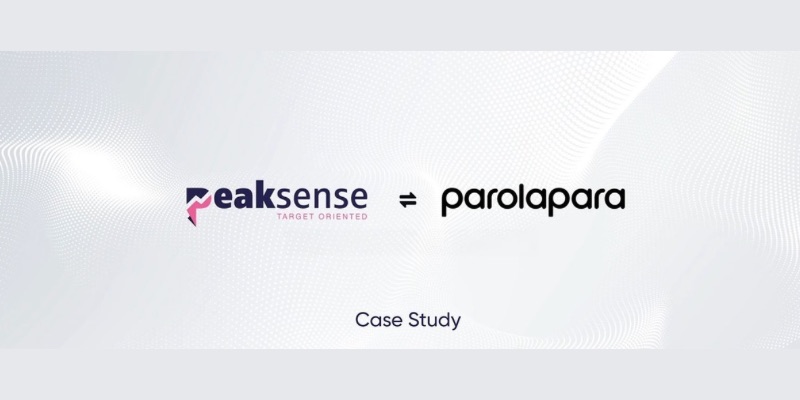Strategic Approaches to Crafting High-Performance Service-Level Agreements
September 12, 2023, 5 min read
In the dynamic landscape of business partnerships, Service-Level Agreements (SLAs) are the backbone of successful collaborations. A well-crafted SLA outlines the expectations, responsibilities, and performance metrics that both parties should adhere to. However, creating a high-performance SLA requires more than just a standard template. It demands a strategic approach that aligns with the goals of both parties and sets the stage for a fruitful partnership. This blog post delves into the key strategies for crafting SLAs that drive excellence and foster strong business relationships.
First Things First: What Does SLA Mean in Business
A service-level agreement (SLA) is a formal agreement between a service provider and its customers, outlining the services the provider will offer and setting the standards they must uphold.
On the other hand, a service-level commitment (SLC) represents a more generalized version of an SLA. Unlike an SLA, which involves a two-way commitment between two teams, an SLC is a one-way obligation defining what a team can assure its customers at any moment. SLAs are particularly crucial in outsourcing and technology vendor contracts because they specify the expected type and quality of service and lay out solutions when these expectations are not met.
Typically, service-level agreements find their primary application in IT companies. SLAs assure service quality and remedy shortcomings, applied externally and within the same company’s departments.
Crafting SLAs That Drive Strong Business Relationships
Clearly Define Objectives and Outcomes
Start by defining the precise goals and results you want to accomplish with the SLA. These objectives can include response times, service availability, or resolving problems quickly. When you establish these expectations upfront, both sides will have a common understanding of what they want to achieve. This provides the basis for accurately evaluating performance.
For instance, when discussing response times, consider the nuances of how quickly the service provider should acknowledge a customer’s request and subsequently provide a solution. Please elaborate on the acceptable timeframes for different types of inquiries, whether routine, urgent, or critical emergencies.
Collaborative Input and Negotiation
Crafting an SLA requires active participation from stakeholders on both sides, promoting collaboration and a shared understanding of collective needs and priorities.
Moreover, this collaborative approach plays a vital role in the negotiation phase. Active participation from both parties leads to an iterative process, ensuring achievable and mutually beneficial terms. Transparent negotiations foster trust and set a positive tone for the partnership’s future.
Quantifiable Metrics
Effective Service-Level Agreements (SLAs) are based on clear performance standards that can be measured. To make these standards more concrete, we use specific measures like response times (how fast they reply to you), resolution times (how quickly they solve problems), and uptime percentages (how often their services are available).
But it’s essential to pick the proper measures. They shouldn’t be chosen randomly. Instead, they should be connected to the services and what’s essential for the partnership. So, these measures are not just numbers; they tell us how well the services work and if they meet our needs.
Flexibility and Scalability
Business landscapes are dynamic, and Service-Level Agreements (SLAs) must be adaptable to keep pace with these shifts. To achieve this adaptability, it’s essential to incorporate provisions within the SLA that account for scaling services to meet increased demands and, conversely, scaling them down when necessary. Additionally, addressing unexpected circumstances or events that might affect service delivery is crucial.
Building flexibility into the SLA enables the partnership to navigate challenges, seize opportunities, and stay resilient in a dynamic business environment.
Addressing Contingencies
Disruptions can affect any partnership; acknowledging this reality is essential. In a Service-Level Agreement (SLA), there should be clear and comprehensive contingency plans designed to address potential downtime, security breaches, or any sudden events that may arise.
These contingency plans protectively mitigate confusion and uncertainty when disruptions occur. By establishing predefined steps and procedures for handling such situations, both parties involved in the partnership can proactively prepare for challenges. This ensures that the response is organized and effective in the event of an unexpected event, ultimately minimizing the impact on service quality and the partnership as a whole.
Regular Review and Improvement
A Service-Level Agreement (SLA) should not remain inactive but should instead grow and adapt to the partnership it governs. To adapt to this evolution, schedule regular reviews to assess SLA efficacy and metric compliance. These sessions enhance partnership performance, promote continuous improvement, and address concerns.
Clarity in Language
Another frequently underestimated aspect is the importance of precise language in the Service-Level Agreement (SLA). The terms and conditions within the SLA must be expressed in a manner that is understandable by all parties involved.
Ambiguity in the language can pave the way for misunderstandings and potential disputes in the future. On the contrary, employing clear language diminishes the likelihood of misinterpretation. This clarity ensures that everyone grasps the terms, responsibilities, and expectations in the SLA, promoting transparency and reducing the risk of conflicts or disagreements arising.
Security
These security measures should be detailed and defined within the SLA, leaving no room for ambiguity. They serve as the formal commitments and guidelines that both parties adhere to, ensuring the security and confidentiality of the partnership. This proactive approach helps create a secure, trust-based environment where potential risks are mitigated.
Clarify Payment Requirements
When constructing your Service-Level Agreement (SLA), it’s necessary to define your expectations regarding payments explicitly. This pertains to any SLA elements that could alter the primary contract’s financial aspects. Ensure that all applicable financial details are well-documented in your SLA.
Moreover, don’t overlook addressing potential exceptions during your service level agreement. Stipulate how these exceptions will be managed and whether any associated fees or financial adjustments will be applicable.
Set clear payment expectations, handle exceptions, and create a solid financial framework in your SLA. This minimizes payment issues, fostering a smoother partnership.
Downloadable SLA Samples
Explore our free, accessible SLA samples, templates, and supplementary insights to help craft and improve your SLA.
Consider these resources valuable starting points that can serve as the foundation for your unique SLA. By leveraging these readily accessible materials and incorporating them into your SLA design, you can streamline the process, save time, and ensure that your final document aligns with industry best practices and your specific partnership requirements.
Conclusion
In conclusion, crafting high-performance Service-Level Agreements demands a strategic approach transcending contractual formality. These SLAs serve as the cornerstone for fostering collaborative and mutually rewarding partnerships founded by the precise definition of expectations, measurable metrics, and contingency plans.
Embracing these principles ensures a shared understanding and commitment to excellence in collaborative journeys. In this manner, businesses can meet their objectives and lay the groundwork for enduring and prosperous relationships.




























